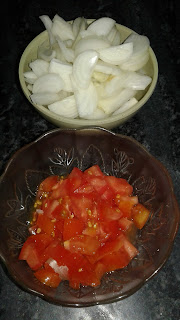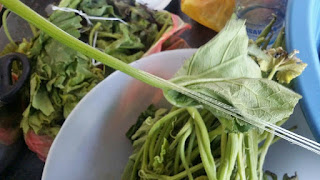The Kapenta Quest
For some reason kapenta is generally not liked by most people (especially the young generation a.k.a generation X). So many people claim to be allergic even when they haven’t tasted it. Could it be its smell, taste or appearance? Well, I can’t blame most people; it generally has a strong chocking smell when being prepared (you can literally smell it miles away) and it is not so great in the presentation department. The few times I have eaten it, it’s been bitter with a strong after taste.
Kapenta comprises of two species called Stolothrissa tanganicae and Limnothrissa miodon. These are basically sardines that come in different sizes and shapes.
With that being said, I have been on a short quest to learn how to prepare it well. I believe we have the power to make food taste and look good if we try to. There’s one person’s kapenta I can eat and that’s my mom’s. My mom prepares it pretty well, and no, I am not being biased. It has a nice sweet taste which I later discovered comes from the caramelized onions with little after taste. I thought I could share the tricks and tips I learnt from her and add a little touch of my culinary knowledge. Let’s get started…
INGREDIENTS
Serving: 3-5 people
1 cup dry kapenta
1 large onion (sliced/julienned)
1 medium ripe tomato (cut into cubes)
Oil
Salt to taste
Chili powder/flakes (optional)
METHOD
Rinse kapenta under running water (room temperature).
Soak in room temperature water for 20 min.
Whilst soaking, prepare the other ingredients.
Completely drain water from kapenta. Use paper towel to pat dry if necessary.
In a medium sized pan, heat up 3 TBSP oil on medium heat.
Add kapenta (ensure it has no water) to the hot oil and continuously stir till it becomes super crispy (not burnt).
Add onion and fry. Continually stirring until it becomes slightly golden brown.
Add cubed tomatoes and stir until tomatoes are cooked for about 6 minutes
Add salt and chili flakes to taste.
Serve hot with nshima (corn meal) or with any preference.
CHEFT TIPS
You will notice this dish requires constant stirring. Ensure to stir through the entire cooking process to avoid it burning.
The soaking is a very important step; it helps retract the bitter/after taste from the fish.
Kapenta requires lots of onion, giving it a nice sweet taste from the caramelized onion and also removes the ‘’fishy taste”. Use a large onion or 2 medium onions.
Ensure the kapenta is crispy before adding onions as it will become soggy and disintegrate.
Add a little oil at a time if it runs out during the cooking process.
Find nice ways to garnish and present.
Kapenta comprises of two species called Stolothrissa tanganicae and Limnothrissa miodon. These are basically sardines that come in different sizes and shapes.
With that being said, I have been on a short quest to learn how to prepare it well. I believe we have the power to make food taste and look good if we try to. There’s one person’s kapenta I can eat and that’s my mom’s. My mom prepares it pretty well, and no, I am not being biased. It has a nice sweet taste which I later discovered comes from the caramelized onions with little after taste. I thought I could share the tricks and tips I learnt from her and add a little touch of my culinary knowledge. Let’s get started…
INGREDIENTS
Serving: 3-5 people
1 cup dry kapenta
1 large onion (sliced/julienned)
1 medium ripe tomato (cut into cubes)
Oil
Salt to taste
Chili powder/flakes (optional)
METHOD
Rinse kapenta under running water (room temperature).
Soak in room temperature water for 20 min.
Whilst soaking, prepare the other ingredients.
Completely drain water from kapenta. Use paper towel to pat dry if necessary.
In a medium sized pan, heat up 3 TBSP oil on medium heat.
Add kapenta (ensure it has no water) to the hot oil and continuously stir till it becomes super crispy (not burnt).
Add onion and fry. Continually stirring until it becomes slightly golden brown.
Add cubed tomatoes and stir until tomatoes are cooked for about 6 minutes
Add salt and chili flakes to taste.
Serve hot with nshima (corn meal) or with any preference.
CHEFT TIPS
You will notice this dish requires constant stirring. Ensure to stir through the entire cooking process to avoid it burning.
The soaking is a very important step; it helps retract the bitter/after taste from the fish.
Kapenta requires lots of onion, giving it a nice sweet taste from the caramelized onion and also removes the ‘’fishy taste”. Use a large onion or 2 medium onions.
Ensure the kapenta is crispy before adding onions as it will become soggy and disintegrate.
Add a little oil at a time if it runs out during the cooking process.
Find nice ways to garnish and present.










Comments